Stay to Play Rate & Relationship Challenges
By: Eric B. Hansen, AIA, ISHC
At last year’s National Association of Sports Commission’s (NASC) Sports Event Symposium held in Oklahoma City, the policy of stay to play was identified as one of the major challenges facing the sports travel industry. During my conversations with hoteliers, market segmentation discussions typically lead to debates about the viability of sports travel as a room night demand generator. I have interviewed hoteliers who embrace sports travel as a viable part of their business model. Conversely, I have interviewed hoteliers who purposely do not engage the sports segment. There are many reasons hoteliers choose not to court sports groups, including the often misunderstood relationships involved in stay to play and unrealistic expectations of the end user.
While the concept is inherently solid, the challenge and debate over stay to play lies in three areas: implementation, lack of transparency, and the end user’s limited understanding of mutual benefits such as team booking logistics and improved travel experiences. Educating the end user on the intricacies of stay to play policies, especially rate dynamics, can improve the relationship between the consumer and hotelier.
Rate and Stay to Play
The relationship between the hotel and the individual sports group consumer sets the tone for guests’ entire travel experience. The roots of this relationship are formed by the rate, which was negotiated in advance by a third party.
Rate integrity is fundamental to the consumers’ perception that they are receiving a good value for their hard-earned sports travel dollars. Lodging is only one of a plethora of costs that go into traveling for a tournament weekend. Athletes and their families have also incurred club fees, tournament fees, and the costs of meals and transportation. Sports travel consumers expect the value they will receive from the rate they pay to be clear. When it comes to stay to play, rate clarity is too often obscured by additional fees such as rebates, commissions and taxes. It is up to the industry to help educate the individual sports group consumer that there is value in stay to play rates beyond the actual lodging expense. If the value is not presented or effectively communicated and rate abuses are prevalent, the sports travel industry will alienate the very consumer they are trying to accommodate, and the challenge of properly implementing stay to play policies will become more difficult.
Sports group travelers don’t often understand the key points involved in the stay to play process:
Who is negotiating? Individual team members typically pay a team rate that has been secured by the club or a third party and cannot negotiate their own rate. The relationship between a hotel and an individual family is different from its relationship with the sports
group as a whole. The hotel must please two stakeholders, who often have different demands.
Rate is more than the cost of a room. Individuals booking under a stay to play arrangement must be aware that the rate they pay is not just for the room. They also are paying for efficient management of travel logistics. Educated sports group consumers understand the inherent value of paying for event logistics so they can give their undivided attention to their athletes and the event. How much a sports group consumer is willing to pay and what is defined as reasonable for the added value is based on variables that include the type of event, location, duration, etc. Negotiated rates are usually discounted from normal transient rates and are identified as the best available rates for the event. As long as the sports group consumer does not feel they are being taken advantage of, they will typically accept the rate.
What’s reasonable? What are reasonable rate perceptions based in the reality of room rates in 2015? Hotel rates in general have increased since 2010, and hotels are becoming more selective in how they negotiate group rates. The individual sports group consumer might not be aware of these base rate increases, and their point of reference for what is reasonable might not align with reality. As a point of reference, the following chart presents the national annual average daily rate (ADR) for all U.S. hotel properties.
$120.00 $115.00 $110.00 $105.00 $100.00
$95.00
$90.00
$90.95
$85.00 $80.00
Total US Average Daily Rate
$106.55
$104.04 $97.31
$98.17
$115.32
$110.30 $106.10
$101.85
2010 2011 2012 2013 2014
$98.08
2005 2006 2007 2008 2009
Source: Smith Travel Research
Over the past 10 years, ADR increased 26.8%. Since the economic low of 2010, ADRs increased on average more than 4% per year. This chart reveals the lower rates of yesteryear truly belong to the past, and customers need a new understanding of what is considered a reasonable sports group rate.
Hotels who participate in stay-to-play agreements are charged third-party commissions and event rights-holder rebates, which cut into the hotel’s profit. These fees, along with sales and occupancy taxes, are passed onto the customer. If hotels aren’t upfront about including those stay-to-play fees in the rate, price-sensitive, rate-shopping consumers may deem the rate as unreasonable. This is especially true if they’ve been shopping through an online travel agency (OTA).
Hoteliers can diffuse the angst caused by comparing group rates to individual rates available through an OTA, by educating them that they’re comparing apples to oranges. OTA rates are less expensive because they are more often one-off rooms that are the last available on a given date. These rooms are not available in large enough blocks that could service an entire team. Most importantly, hoteliers should educate the consumer on the disadvantages that are involved in the OTA cancellation/change process. Booking through an OTA creates a second-hand relationship with the hotel that is not always transparent to the consumer. Unfortunately, the hotel is left to deal with the fallout when an OTA booking goes awry.
Rate Considerations from a Hotelier’s Perspective
Hoteliers can choose which markets and demand segments they wish to target. They also can choose whether to engage in a stay to play policy. Hotels need to make sure that any stay to play agreement is in the best interest of the hotel and its future guests. Increasing rebates and commissions associated with stay to play is causing significant downward pressure on ADRs from the sports segment. If this continues, market forces will correct themselves, but only after a reduction in available room supply for sports group demand.
For example, consider a Northeast hotel that offers significant amenities for families, making it a popular destination. Our interview as part of a hotel feasibility study revealed management realized in its bidding process for certain stay to play events that the rate communicated via the event website to their end user was significantly higher than their best available rate. This, in turn, resulted in lost business during non-event times because the sports consumer perceived the hotel was taking advantage. As a result, the hotel no longer participates in stay to play events.
An important aspect of the relationship between the hotelier and guest is that the hotel and its staff may set the first impression for visiting teams. Expectations are high, and a positive or negative experience will reflect on all stakeholders – the hotel, the event and the community at large.
The bottom line is that there is no substitute for a well-written, equitable and effectively communicated stay to play policy.
Author
Eric B. Hansen, AIA, ISHC, will present “Crafting an Impactful First Impression for Your Guests,” which explores roles and best management practices for hoteliers engaged in sports travel, at the 2015 NASC Sports Event Symposium in Milwaukee on April 27-30. Mr. Hansen is Director of Development Services for Hotel & Leisure Advisors, a national hospitality consulting firm. Mr. Hansen prepares appraisals, market feasibility studies, economic impact studies, property condition assessments, and impact studies for hotels, resorts, waterparks, sports facilities, golf courses, conference centers, and other leisure properties.
Hotel & Leisure Advisors, LLC
14805 Detroit Avenue
Suite 420
Cleveland, Ohio 44107-3921 Phone:216-228-7000 x21
Fax: 216-228-7320
Email: ehansen@hladvisors.com
Web Site: www.hladvisors.com
LinkedIn: http://www.linkedin.com/in/erichansenhla

